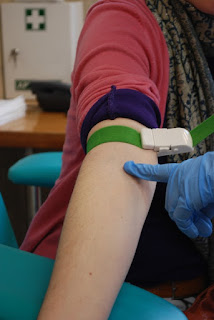Legionnaires’ disease is a particularly common illness throughout the United Kingdom. It affects thousands of people here every year. According to studies, the top causes of this disease are infected plumbing systems and improperly cleaned water tubs.
Diagnosing Legionnaires’ Disease
Various types of laboratory tests are done to diagnose this disease. These usually include assessing the number of white blood cells, testing for any mild abnormalities in liver function studies, and low sodium levels in the blood. Chest X rays will also be taken and some additional specialised tests are required for diagnosis such as urine and sputum testing. These specialised tests are done to detect identifiable proteins of the Legionnaires' bacterium (or Legionella antigens).
Another specialised test done by experts to detect this disease is to compare antibody levels of Legionella in two blood samples obtained three to six weeks apart. This method shows a fourfold rise in the antibodies in the blood against the bacterium and can be confirmatory after the disease is gone.
Treatment
There are three major classes of antibiotics that have been proven effective in treating Legionnaires’ disease These are:
- Fluoroquinolones such as levofloxacin (Levaquin) and moxifloxacin (Avelox)
- Macrolides such as erythromycin, azithromyocin (Zithromax), and clarithromycin (Biaxin)
- Tetracyclines including doxycycline (Vibramycin)
Glycylcyclines, a new class of antibiotics, are also effective.
The choice of antibiotic is usually dependent on the patient's clinical state, tolerance to the medication, and degree of certainty as to the diagnosis. Studies show that Zithromax and Levaquin are particularly effective because of decreased gastrointestinal irritation, higher potency, better penetration into tissue, and once-daily dosing.
Info source: aquacert.co.uk
Diagnosing Legionnaires’ Disease
Various types of laboratory tests are done to diagnose this disease. These usually include assessing the number of white blood cells, testing for any mild abnormalities in liver function studies, and low sodium levels in the blood. Chest X rays will also be taken and some additional specialised tests are required for diagnosis such as urine and sputum testing. These specialised tests are done to detect identifiable proteins of the Legionnaires' bacterium (or Legionella antigens).
Another specialised test done by experts to detect this disease is to compare antibody levels of Legionella in two blood samples obtained three to six weeks apart. This method shows a fourfold rise in the antibodies in the blood against the bacterium and can be confirmatory after the disease is gone.
Treatment
There are three major classes of antibiotics that have been proven effective in treating Legionnaires’ disease These are:
- Fluoroquinolones such as levofloxacin (Levaquin) and moxifloxacin (Avelox)
- Macrolides such as erythromycin, azithromyocin (Zithromax), and clarithromycin (Biaxin)
- Tetracyclines including doxycycline (Vibramycin)
Glycylcyclines, a new class of antibiotics, are also effective.
The choice of antibiotic is usually dependent on the patient's clinical state, tolerance to the medication, and degree of certainty as to the diagnosis. Studies show that Zithromax and Levaquin are particularly effective because of decreased gastrointestinal irritation, higher potency, better penetration into tissue, and once-daily dosing.
Info source: aquacert.co.uk


No comments:
Post a Comment